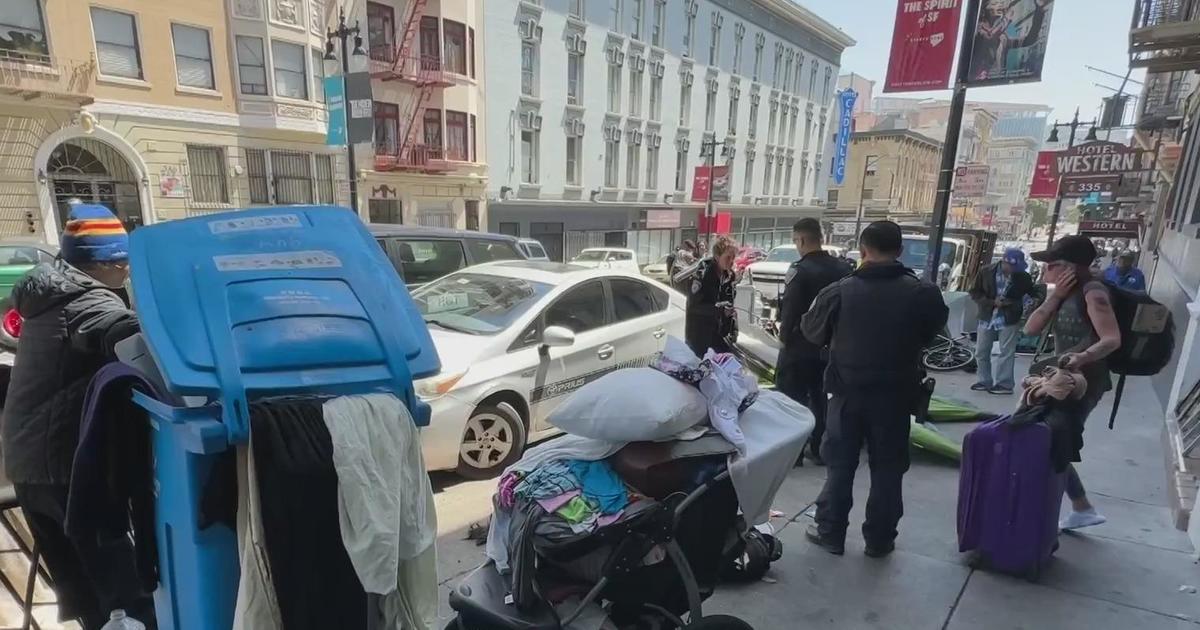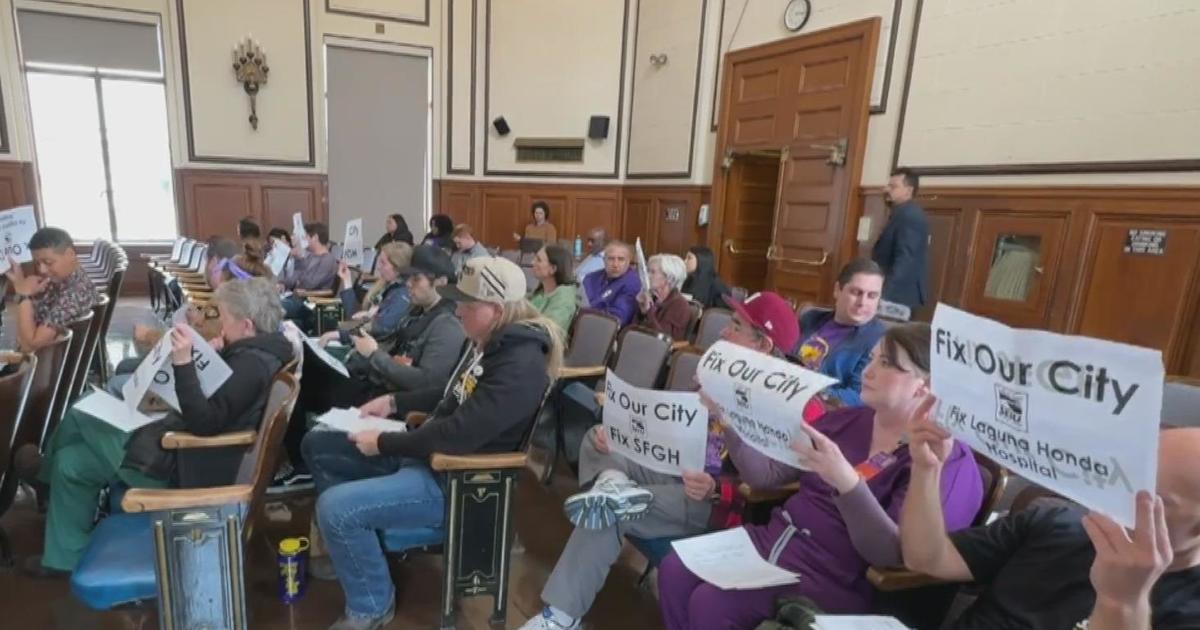San Francisco's cleanup of Tenderloin District faced with steep challenges
SAN FRANCISCO - San Francisco's efforts to take control of the years-long crisis in the Tenderloin are shifting again, producing numbers that may start to deliver noticeable results over time.
Helping the Tenderloin as a whole was always going to depend on helping those we see on the streets every day. Saving the neighborhood means finding answers for each person out there, when any single case can be a long, complex endeavour.
"There's more work than we can handle out here," said Mark Mazza with the san Francisco Department of Emergency Management. "I just had a woman come and tell me that a tent moved from one corner to another. We have to explain to people that right now we've got rules we have to work with."
ALSO READ: San Francisco steps up emergency effort to bring Tenderloin back from brink
Surrounded by frustrated residents and fed up business owners, Mark Mazza is taking on a challenge some might think impossible. Working for the city's Department of Emergency Management, he is the Tenderloin Streets Operation Manager, and he sees a lot of these streets.
"I do a lot of walking," Mazza acknowledged. "Probably about 50 miles a week."
And all the walking reflects another shift in city strategy, this one driven by the December closure of what debuted as the Tenderloin Linkage Center.
"When the Tenderloin Center closed, we had to focus 100% on bringing those services to the street," Mazza explained. "So that's when we just divided the neighborhood into four areas, and every day we work that area, seven days a week. HSH, DPH, DPW. We've divided the tenderloin into four different zones. We come through. We offer to get people to shelter with wellness checks. If someone has somewhere to live already, or they're in a shelter, we try to get them back there."
It's a slow, day by day, case by case process that often means revisiting the same people in the same tents for months - with occasional breakthroughs.
"Oh yeah, we had somebody, it was a couple, and we had a couple navigation center beds down in the Bayview," he said of the help provided.
But then there is the scale of the challenge, in a city with an unsheltered homeless population of about 4,400.
"We can't keep up," Mazza said of the uphill climb. "There's so much to need out here and not enough of us to help. Nobody should have to live like this. And no one should have to walk through this. This is a pathway right here kids take to the playground up the street. Everybody out here doesn't want to be out here."
"They just started contacting people when Covid happened," said Abe, a homeless man on the streets of the Tenderloin. "Before that, there wasn't any people really offering. Occasionally if the police caught you nodding off they'd take you to a navigation center."
Abe has been in San Francisco for 10 years, almost all of it on the street. He says he is seeing more offers for help. So why is he still on the street? He says it comes down to the available options, and that is something Mazza hears just about every day
"This group, they would go inside if they were eligible for what they want," Mazza said of a collection of people in the neighborhood. "They want hotel rooms. And they don't meet the eligibility requirements, so they want to stay out here."
"It's totally bs," Abe said of his lack of eligibility and the prospect of congregate shelter. "They come up and they want you to throw away all your personal property, drop everything and go with them. and go to a like a dorm where they're just stacking everybody. It's like a metal house in there. For real."
"I can't blame people for not wanting to go into a congregate shelter," Mazza said. "That's their decision."
And while many parts of this are complicated - like finding enough housing for everyone - others parts are more straightforward,
"Many people won't go inside because this is where they get their drugs," Mazza said of some on the streets. "And their sickness has them where they're not making decisions you and I would think of the right ones. That's why they're out here. And that's why we keep coming back to try to catch them at the right time, when they're ready to do something different."
All of that effort is translating into numbers. The city has been placing as many as 300 people into some type of housing - every month. Sometimes more. Those numbers are quite a bit higher than in years past, but not all of those people placed in housing end up staying there.
"We've made some progress, but here's the problem," Mazza said of the complexities of keeping people housed. "What happens out on the street, and what keeps people safe out here, get them kicked out of the housing. If you want to stay out here, you need to be scary, you need to be able to yell at people, you need to be loud to keep people away from you. hoarding and cluttering disorders are a real thing. So unless we're working on that out here on the street, before people go indoors, become things that kept them safe out here get them right back out on the street. "
So this work goes on, day after day, rain or shine, as the city tries to chip away at this challenge. And for exhausted neighbors and business owners.
"I just want people to see how much work is going on out here, and how hard people are trying," Mazza said of his team. "The Tenderloin is going to be the Tenderloin. But this is unacceptable."




